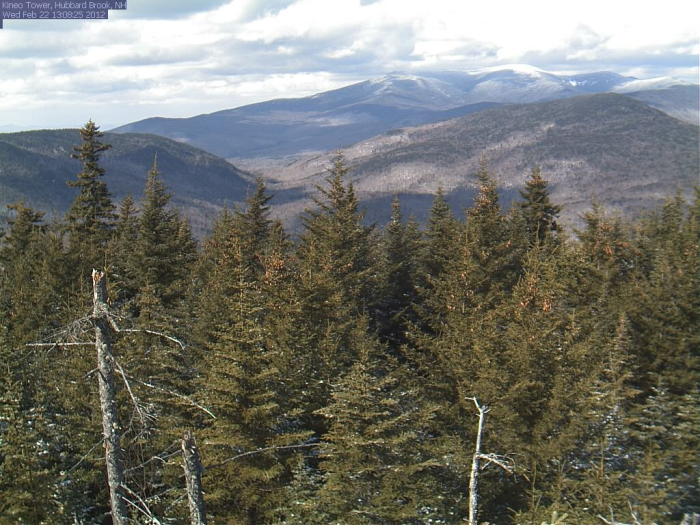




ニューハンプシャー州中央部のホワイト マウンテン国有林にあるハバード ブルック実験林 (HBEF) は、1955 年に米国農務省森林局によって設立されました。森林局北部研究ステーションは、HBEF を使用して、樹木季節学を含む生態系のプロセスを研究する方法として、小流域技術の先駆者となりました。
1989 年、森林局は HBEF に観測季節区分を設置しました。毎年、定期的な樹木季節観察を使用して、実験林での葉の展開と落葉の季節的なタイミングを記録しています。森林局は季節区分指数を設計し、葉の出現と老化の空間的および年次的な違いを記録しています。
HBEF の遠隔地にある生物季節区分は、年間を通じて厳しい気象条件にさらされています。HBEF の気候は高度によって異なりますが、主な特徴としては、天候が大きく急激に変化すること、日中および年間の気温範囲が広いこと、月ごとの降水量が一定していることなどが挙げられます。
森林局は、生物季節学的測定の頻度を増やすことで、HBEF の生育期に関する知識を拡大したいと考えていました。この目標を念頭に、森林局は 2010 年に、最初のリモート ウェブカメラを設置して研究を自動化することを決定しました。ウェブカメラの目的は、年間を通じて高解像度のデジタル カラー情報で、観測生物季節学的データを補完することです。
現地の森林局スタッフは、StarDot NetCam XL ウェブカメラのネットワークを設置し、流域全体の画像を 1 時間ごとに撮影しています。HBEF 内の 9 つの計測された流域では、水量と水質の入出力を監視しています。ウェブカメラは、近くのミラー湖の画像を 1 時間ごとに撮影し、湖の氷の存在を検出します。これらの画像により、森林局は毎年氷のない日を追跡できます。
ウェブカメラは、LoggerNet ソフトウェアを使用して、NL120 イーサネット インターフェイスを備えたリモート Campbell Scientific CR1000 データロガーによって制御されます。現場での電力消費を最小限に抑えるために、CR1000 は日中、ウェブカメラに 1 時間あたり 10 分間電力を供給し、1 時間ごとの画像を収集して保存するのに十分な時間を確保します。森林局は、プログラムのトラブルシューティングと機器の構成について Campbell Scientific と協力し、必要な画像を適切な頻度でキャプチャできるようにしました。
CR1000 で収集され保存された画像は、森林局事務所のデスクトップ コンピュータでホストされている LoggerNet サーバーに 1 時間ごとに送信されます。送信は、ワイヤレス RF450 スペクトラム拡散無線を介して行われます。その後、画像は処理と Web ホスティングのために phenocam ネットワーク チームに転送されます。
森林の観測地点は遠隔地にあるため、現場の機器は直流太陽光発電システムによって電力供給されています。
デジタル画像を継続的に使用することで、森林局は樹木季節学の調査のための自動かつ頻繁な監視とデータ記録を行えるようになり、画像によって組織の生態学的プロセスに対する理解が深まります。ハバード ブルック実験林は、国の森林地帯に適用できる長期研究のための生きた実験室として機能します。